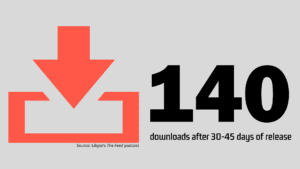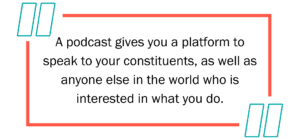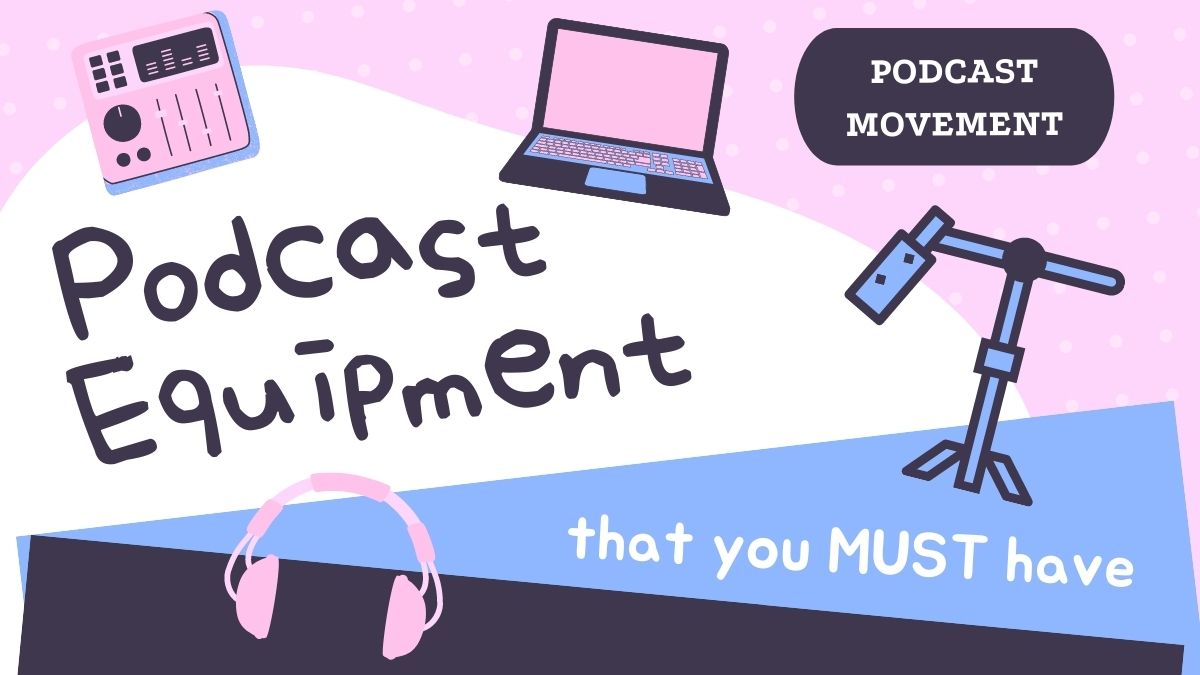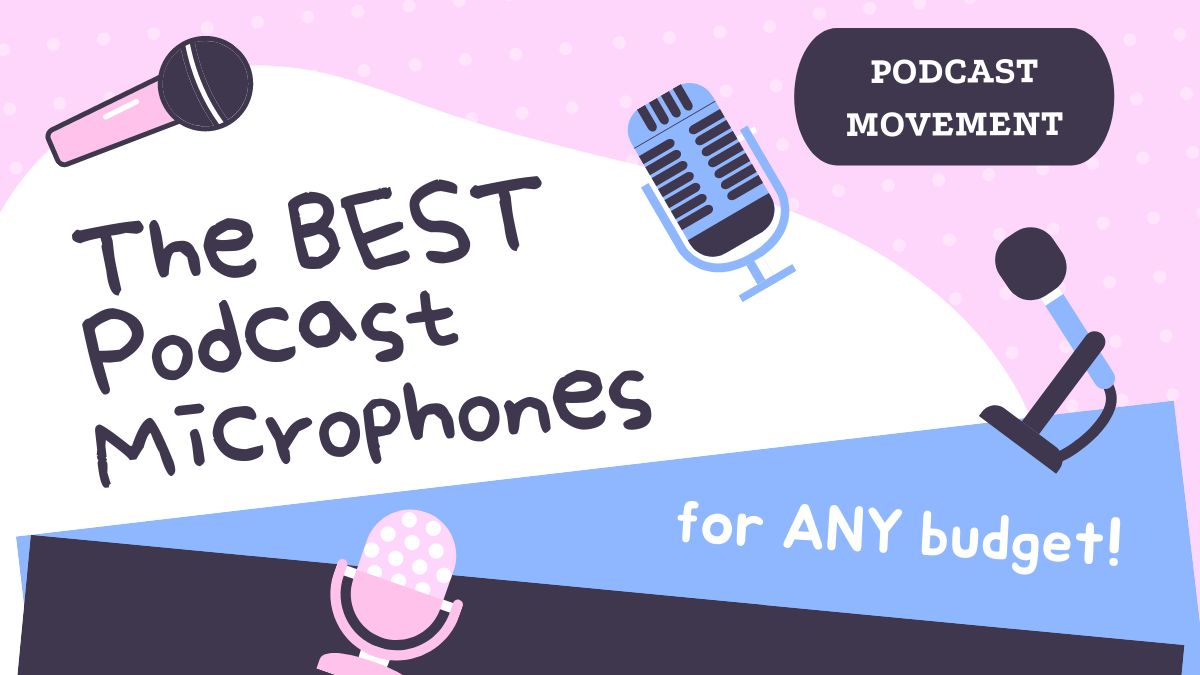Note: This article is geared toward brands and organizations that produce original podcasts, but much of the information applies as well to independent podcasters and entrepreneurs.

How often do you check your podcast downloads? Once a week? Once a day? Once an hour? If you’re like me, the frequency is probably more than you care to admit.
It can be really frustrating to see a slow uptick or stagnation after you’ve been doing your show for a little while and putting in the time and energy to promote it.
As you may know, the median number of downloads per episode is only around 140 after 30-45 days according to Libsyn’s The Feed podcast. Given that half of all podcasts never get above this number on average, what’s the point of investing the time, money, and creative capital into producing one?

These questions become even more salient for podcasts that are produced on behalf of organizations. Unlike entrepreneurs, we are not necessarily using our shows to directly sell a course, product, or other service.
Organizations also have many competing priorities, and the choice to start a podcast probably was not made lightly. You might even have a board of directors or other higher-ups who you need to convince to continue producing the show.
If you are wondering whether you should start a podcast at your organization, there’s an article for that. This one will focus on three ways active podcasters can measure and report on growth without ever glancing at your download numbers.
This doesn’t mean you should ignore them completely (I sure as heck can’t), but they’re not the only way to track progress.
Your Organizational Rolodex
Simply put, a podcast gives you a reason for reaching out to people you would have no business connecting with otherwise.
This was definitely the case for my organization, the McCourtney Institute for Democracy at Penn State. We produce a podcast called Democracy Works that has allowed us to punch above our weight class in terms of partnerships.

We are a team of four and one very small part of a large university, but thanks to the podcast, we’ve collaborated with Princeton, Notre Dame, the Scholars Strategy Network, and the George W. Bush Presidential Center — just to name a few. All of these organizations either have podcasts themselves, or have guests that they want to have on our show.
The partnerships have been so fruitful that we are now in the process of starting a podcast network of shows around democracy, civic engagement, and civil discourse. We look at it as a way to put some process and structure around the one-off partnerships we’ve formed since we launched the show in March 2018.
If we can do this with a team of four, there’s no reason any other organization can’t do the same thing. Establishing a relationship through a podcast can lead to future collaboration opportunities down the road.
Attention, Attention, Attention
If most colleges, nonprofits, or other organizations had 140 people show up to one of their events, they would consider that event to be a resounding success. If your podcast receives that many downloads per episode, you are getting people to tune in week after week.
In the words of Jay Acunzo at Marketing Showrunners, good marketing isn’t about grabbing someone’s attention, it’s about holding it. And a podcast is the perfect way to hold that attention, as long as you pick a release schedule and stick to it.
I’ve had listeners tell me that they look forward to starting their Monday morning commute with my cohosts and I (our show publishes around 5 a.m. ET on Mondays). That level of dedication and quality of engagement is something that no amount of advertising dollars can cultivate. It’s difficult — if not downright impossible — to achieve through a newsletter, webinar, or other medium.
You don’t need to gain a lot of attention for this to be worthwhile. I would rather have 100 consistent listeners who love what we do than 10,000 who might see our organization in a traditional advertising channel and forget about us the next minute.
For another way to visualize this, check out this representation of what it would look like if you did physically assemble your podcast’s listeners into one place. Shoutout to Doug Parsons at America Adapts, the Climate Change Podcast, for sending this one my way!

The next time you are looking to spread the word about a fundraising campaign, in-person event, or other program your organization is doing, you will have a built-in audience and a venue in which to present them those messages. Just be careful that you don’t overdo it and turn your podcast into a commercial.
The quality of engagement from a podcast is way higher than a newsletter, webinar, or other form of media. Your listeners are letting you into their ears during their commute, workout, household chores, or other parts of their lives.
Even if it’s only a small number, the connections you make will be far deeper.
Influence and Thought Leadership
I think the words “influencer” and thought leader” are both ridiculously overused, but they’re the best I can come up with to describe the final effect of podcast growth at organizations.
Chances are, your organization is not the only one that does what you do. Universities have research centers that work in similar areas, and there’s no shortage of nonprofits competing for time and attention around the same causes and issues.

You can’t do anything about your competitors, but you can become the only one of them with a podcast, or the one that brings something new and innovative to the field if someone else already beat you to the punch.
Either way, a podcast gives you a platform to speak to your constituents, as well as anyone else in the world who is interested in what you do. Other types of media do this, too, but a podcast strikes the right balance of connecting with the listener (you’re coming directly into their ears) and relative ease of production.
You could start a blog to establish thought leadership, but it’s more difficult to achieve that same sense of authority using only the written word. You could make a video series, but that will likely take longer and cost more to produce.
There’s More to Life than Downloads
It can feel depressing to refresh your analytics dashboard and not see the gains you were hoping for. Instead of asking the question that every podcaster seems to these days — about how you can grow your audience — focus on how you can use the podcast as a stepping stone to grow in other ways.
At the end of the day, your podcast is a unique way to communicate your mission, vision, and values to an audience who actively wants to hear it
As your influence and connections grow, your downloads might just follow suit. Even if they don’t, you can feel confident knowing that your organization is making an impact in its respective field.





Join the Movement